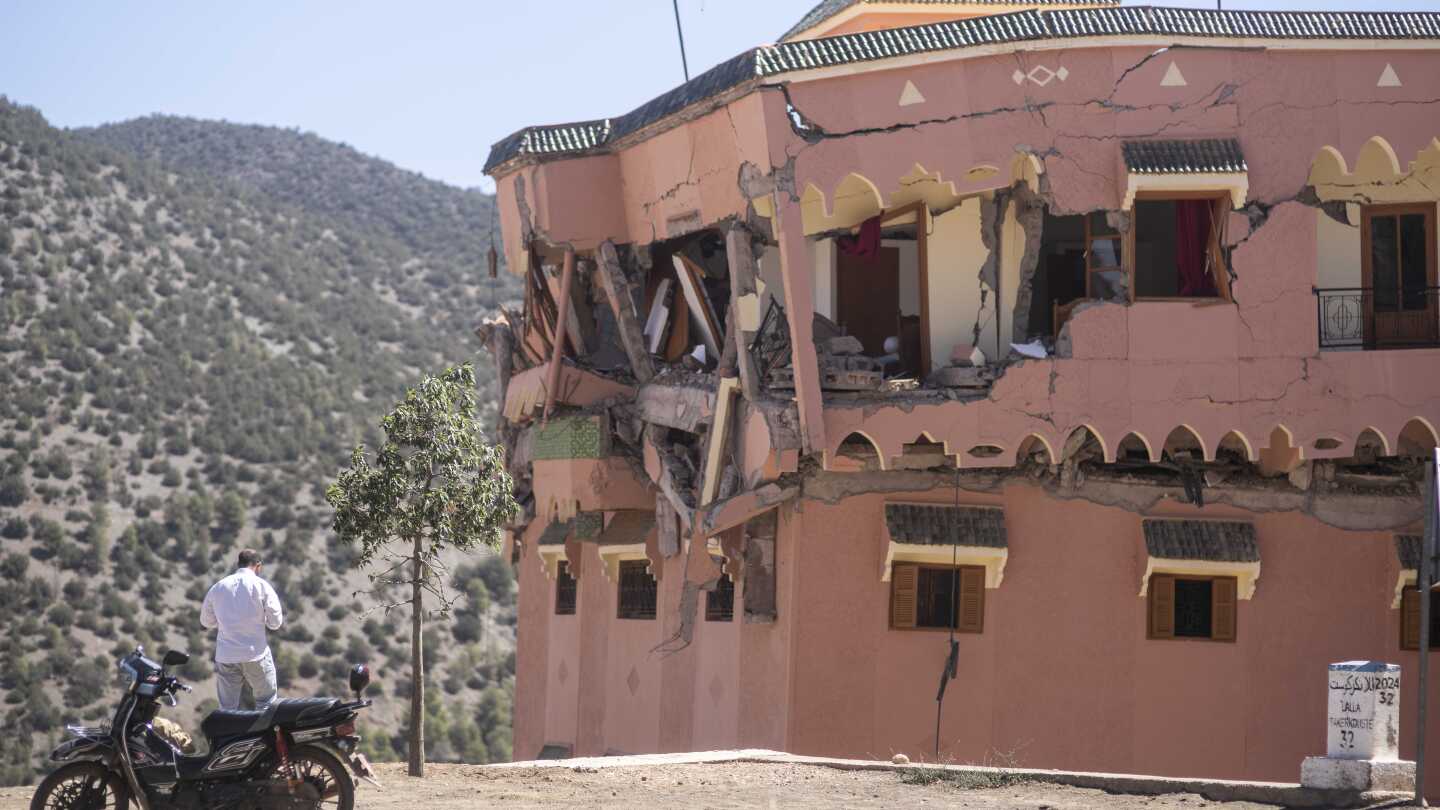MARRAKECH, Morocco (AP) — Morocco worked Sunday to rescue survivors and prayed for victims of the country’s strongest earthquake in more than a century, while soldiers and aid workers brought water and supplies to mountain villages in ruins. More than 2,000 people are dead — a number that is expected to rise.
Those left homeless by the destruction of Friday night’s earthquake slept outside Saturday, in the streets of the ancient city of Marrakech or under makeshift canopies in Atlas Mountain towns like Moulay Brahim, among the hardest-hit. The worst destruction is in small, rural communities that are hard for rescuers to reach because of the mountainous terrain.
The magnitude-6.8 earthquake sent people racing from their beds into the streets and toppled buildings in mountainous villages and cities not built to withstand such a mighty quake. Some 2,012 people were confirmed dead and at least 2,059 more people were injured — 1,404 critically — Morocco’s Interior Ministry reported Saturday night.
“We felt a huge shake like it was doomsday,” Moulay Brahim resident Ayoub Toudite said. “Ten seconds and everything was gone.”
Flags were lowered across Morocco, as King Mohammed VI ordered three days of national mourning starting Sunday. The army mobilized specialized search and rescue teams, and the king ordered water, food rations and shelter to be provided to those who lost their homes.
The king called for mosques across the kingdom to hold prayers Sunday for the victims, many of whom were buried Saturday amid the frenzy of rescue work nearby.
Aid offers poured in from around the world, and the U.N. said it was coordinating with Moroccan authorities about how international partners can provide support. The king offered thanks but no clear message about whether Morocco would welcome foreign rescuers.
The epicenter of Friday’s quake — the biggest to hit the North African country in 120 years — was near the town of Ighil in Al Haouz Province, roughly 70 kilometers (44 miles) south of Marrakech. Al Haouz is known for scenic villages and valleys tucked in the High Atlas Mountains.
About 45 kilometers (28 miles) northeast of the quake epicenter, fallen walls exposed the innards of damaged homes, their rubble sliding down hills. People in Moulay Brahim, a poor rural community of less than 3,000 people, live in homes made of clay brick and cinder block. Many of the houses are either not safe or no longer standing.
Devastation gripped each town along the High Atlas’ steep and winding switchbacks, with homes folding in on themselves and people crying as boys and helmet-clad police carried the dead through the streets.
”I was asleep when the earthquake struck. I could not escape because the roof fell on me. I was trapped. I was saved by my neighbors who cleared the rubble with their bare hands,” said Fatna Bechar in Moulay Brahim. “Now, I am living with them in their house because mine was completely destroyed.”
Hamid Idsalah, a 72-year-old mountain guide, said he and many others remained alive but had little future to look forward to as they lack the financial means to rebound.
Some Marrakech shop owners returned to work Sunday morning, after the king encouraged economic activities to resume nationwide and ordered plans to begin to reconstruct destroyed buildings.
For much of Saturday in historic Marrakech, people could be seen on state TV clustering in the streets, afraid to go back inside buildings that might still be unstable.
The city’s famous Koutoubia Mosque, built in the 12th century, was damaged, but the extent was not immediately clear. Moroccans also posted videos showing damage to parts of the famous red walls that surround the old city, a UNESCO World Heritage site.
The president of Turkey, which lost tens of thousands of people in a massive earthquake in February, was among the countries proposing assistance. Despite an outpouring of offers of help from around the world, the Moroccan government had not formally asked for assistance.
Marrakech and the mountain region hit by the quake are popular with tourists from around the world, who were among those encouraging international aid.
“This is the first time I experienced an earthquake,” British tourist Grahame Stuart said in Moulay Brahim. “It really sinks home with you when you come here and see the epicenter of all people who have lost their homes, their accommodations and have no water. It’s obviously a natural disaster but everybody in the European community and around the world must help”.
Police, emergency vehicles and people fleeing in shared taxis spent hours traversing unpaved roads through the High Atlas in stop-and-go traffic, often exiting their cars to help clear giant boulders from routes known to be rugged and difficult even before Friday’s earthquake.
“It felt like a bomb went off,” 34-year-old Mohamed Messi said.
The U.S. Geological Survey said the quake had a preliminary magnitude of 6.8 when it hit at 11:11 p.m., with shaking that lasted several seconds. The agency added that a magnitude-4.9 aftershock hit 19 minutes later. The collision of the African and Eurasian tectonic plates occurred at a relatively shallow depth, which makes a quake more dangerous.
In 1960, a magnitude-5.8 tremor struck near the Moroccan city of Agadir and caused thousands of deaths. That quake prompted changes in construction rules in Morocco, but many buildings, especially rural homes, are not built to withstand such tremors.
In 2004, a magnitude-6.4 earthquake near the Mediterranean coastal city of Al Hoceima left more than 600 dead.
Friday’s quake was felt as far away as Portugal and Algeria, according to the Portuguese Institute for Sea and Atmosphere and Algeria’s Civil Defense agency, which oversees emergency response.
___
Associated Press writers Angela Charlton in Paris, Ahmed Hatem in Cairo, and Brian Melley and Hadia Bakkar in London contributed to this report.

